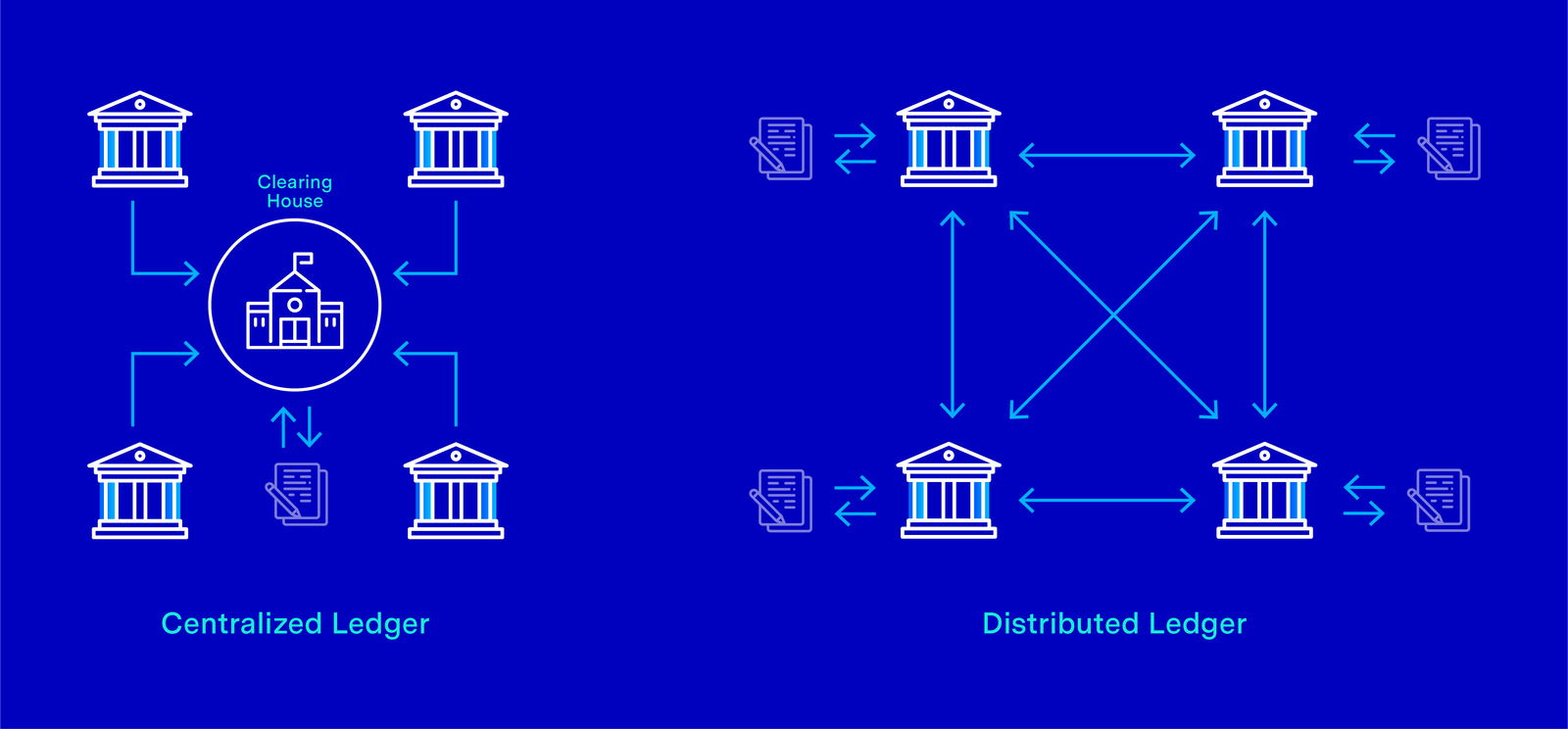The energy consumption of blockchain technology


· 8 min read
The potential for blockchain technology to profoundly disrupt the world is enormous. The financial system is often seen as the most vulnerable industry primed for disruption. This technology has the potential to disrupt a variety of industries, including aerospace and defence, supply chain and logistics, and energy management, most notably decentralised micro-grid systems.
A blockchain is a technology that serves as the basis for digital assets. Bitcoin and Ethereum, the two most popular digital assets, account for 59% of the entire industry. This article will discuss the energy consumption of blockchains, more precisely the bitcoin blockchain. Bitcoin is a digital currency that can be transferred directly between users through the peer-to-peer bitcoin network, eliminating the need for intermediaries.
Mining, is the process through which new bitcoins enter circulation, it is a critical component of the bitcoin creation process. Bitcoin miners validate transactions by utilising computers to solve complex cryptographic equations. These authenticated transactions are grouped into blocks and added to previous immutable blocks to create a chain of blocks referred to as a blockchain. With the exponential growth of bitcoin's price and popularity, as well as the increasing volume of transactions, the energy consumption of this industry has become very topical in recent years.


Bitcoin mining is arguably one of the most profitable industries on the planet now, as seen by the increasing number of mining companies going public in recent years across North America and the growth of state-sponsored or supported mining operations, as seen in El Salvador and the US state of Texas.
To critics, bitcoin mining uses a great deal of energy and is hazardous to the environment. According to these sceptics, the negative consequences of Blockchain technology, notably bitcoin mining, far outweighs the benefits. Globally, industries are being pressed to decrease their reliance on non-renewable energy sources and carbon emissions. As digital assets grow more prevalent, their high energy consumption has become a source of contention, with passionate arguments on both sides.
According to the University of Cambridge Centre for Alternative Finance's Bitcoin Electricity Consumption Index (BECI), Bitcoin currently consumes close to 110 Terawatt Hours per year, accounting for 0.55% of global electricity consumption.(Cambridge Bitcoin Electricity Consumption Index (CBECI), 2021). This is roughly equivalent to the annual electricity consumption of Pakistan and the Netherlands. At face value, this is alarming and warrants further discussion. This piece will dive deeper into how to make bitcoin mining greener and environmentally sustainable. However, first we must address some common misunderstandings about blockchain energy use.
Bitcoin miners are not confined to specific locations, they can operate anywhere in the world with sufficient internet connection. As renewable energy sources become more cost-competitive, PoW miners will increasingly move to areas with high renewable energy concentrations.
The amount of energy consumed by blockchains largely depends on their consensus mechanism. Consensus mechanisms or protocols are procedures by which all of the peers (database nodes, application servers, and so on) of the blockchain network come to a common understanding about the current state of the distributed ledger; such mechanisms are aimed at reaching a common understanding that is beneficial to the entire network. Additionally, consensus mechanisms in crypto-economic systems assist to prevent certain types of economic attacks such as 51% attacks.
High energy consumption is not inherent to every blockchain design. The main consensus mechanism that requires the most energy is the Proof of Work (PoW) mechanism, which is the network that enables bitcoin creation. The system is fiercely competitive with new specialised hardware devices called ASICs that generate greater processing power and energy. PoW miners compete for these mining rewards which are in the form of freshly mined bitcoins. The higher a miner's computational power and the more technologically sophisticated the ASICs, the larger the bitcoin rewards payouts.
Proof of Stake (PoS) is an alternative to Proof of Work (PoW). In contrast to PoW, validators are needed to stake the native digital assets, rather than ASIC miners. PoS networks do not need a lot of processing power, they consume 99% less energy than PoW networks. Ethereum, the second-largest digital currency, is transitioning from PoW to PoS; the graph below indicates the difference in energy use.
To accurately estimate the quantity of carbon emitted by bitcoin mining, it is necessary to first establish the industry's worldwide energy mix. PoW miners are located in several countries and use a range of energy sources. There will be less carbon in one unit of solar-generated power compared to a coal plant. An accurate estimate of the total energy required by bitcoin mining may be derived by estimating the hash rate and calculating the total energy consumption of ASIC miners used in the mining process.
Calculating the quantity of carbon released by these miners throughout the globe, however, is challenging. The mining process consumes the bulk of bitcoin's energy, bitcoins need very little energy after they've been mined. Let us consider a creative approach to make bitcoin mining more sustainable.
Levelized Cost of Energy (LCOE) refers to the average net present value of electricity production during the lifetime of generating technologies. It is useful for investment planning and consistent comparison of various generating technologies.
The LCOE for solar has decreased by 90% over the last decade, according to recent statistics from the US Energy Information Administration (EIA), the unsubsidized cost is 3-4 cents/kWh. The LCOE of some projects is even lower. Compared to fossil fuels, the average LCOE of coal is about 5-7 cents/kWh, implying that solar is already cheaper than coal and at par with geothermal and hydro.
The price of solar has fallen to the point where it is cheaper to build new solar generating capacity than to operate existing coal plants in some parts of the world. The case for solar is comparable to other renewables such as wind, hydro, and geothermal in various regions of the world.
Due to grid flexibility, overgeneration, and interruptible load difficulties, PoW miners may become one-of-a-kind buyers of solar-generated electricity. There is a mismatch between peak demand and peak production, production is normally at its greatest in the middle of the day, while demand is at its peak in the early evening.
Bitcoin mining provides a solution to this conundrum by providing Demand Response (DR) with smart batteries that may be switched on and off in an instant. The grid may pay bitcoin miners to shut down when demand increases. Bitcoin mining also offers granularity in Demand-Response, if the energy supply to a mining farm must be reduced by 50%, the farm can shut down precisely 50% of its supply. Miners can shut down in batches, giving the grid the exact power it requires during peak demand.
Organisations such as the Climate Chain Coalition, Climate Ledger Initiative, Blockchain for Climate Foundation, and Yale Open labs Open Climate, among others, are leading the way in leveraging blockchain technology to contribute to the climate agenda. The Chinese government's prohibition on all blockchain mining has been beneficial to the sector, driving some of the world's largest coal-powered mining farms to regions with vast renewable energy resources, like North America and Iceland.
To recap, the energy usage of blockchains varies due to varied design mechanisms. PoS blockchains have significantly decreased energy consumption. Throughout North America, various commercial services power PoW mining farms with renewable energy.
PoW miners have the potential to become the purchasers of last resort for all renewable energy sources. Bitcoin mining has the potential to accelerate the global energy transition to renewables by acting as a complementary dynamic load option, enabling power grids to deploy more energy when demand is high and transferring energy back to mining farms in times of overgeneration.
This article is also featured on the London Journal of Energy. Future Thought Leaders is a democratic space presenting the thoughts and opinions of rising Energy & Sustainability writers, their opinions do not necessarily represent those of illuminem.
[2] ([Internet]. Jbs.cam.ac.uk. 2021 [cited 5 November 2021]. )
[6]Li J, Li N, Peng J, Cui H, Wu Z. Energy consumption of cryptocurrency mining: A study of electricity consumption in mining cryptocurrencies. Energy. 2019;168:160-168.
[7] ([Internet]. Cfpub.epa.gov. 2021 [cited 6 November 2021]. )
[8](,a href="https://hbr.org/2018/11/making-cryptocurrency-more-environmentally-sustainable?ab=at_art_art_1x1 ">Making Cryptocurrency More Environmentally Sustainable [Internet]. Harvard Business Review. 2021 [cited 7 November 2021]. )
[9] (Solar + Battery + Bitcoin Mining [Internet]. Medium. 2021 [cited 3 December 2021].)
illuminem briefings

Oil & Gas · Ethical Governance
Jonathan Lishawa

AI · Energy Transition
Olaoluwa John Adeleke

Power Grid · Power & Utilities
Financial Times

Hydrogen · Energy
Vox

Energy Sources · Lithium
Al Jazeera

Oil & Gas · Energy